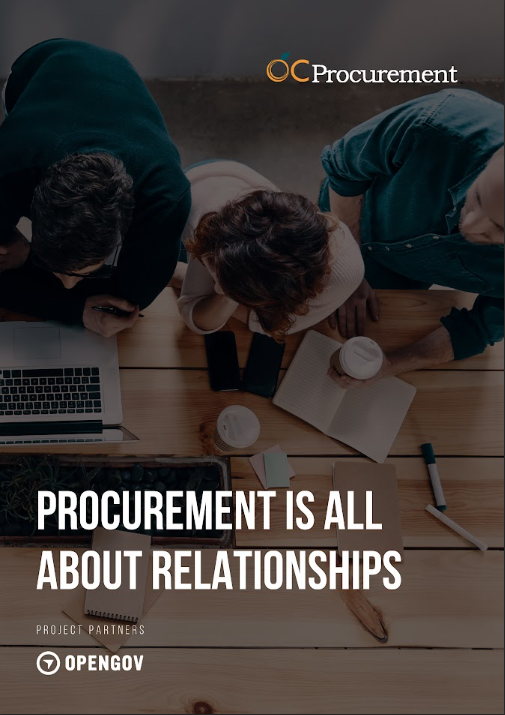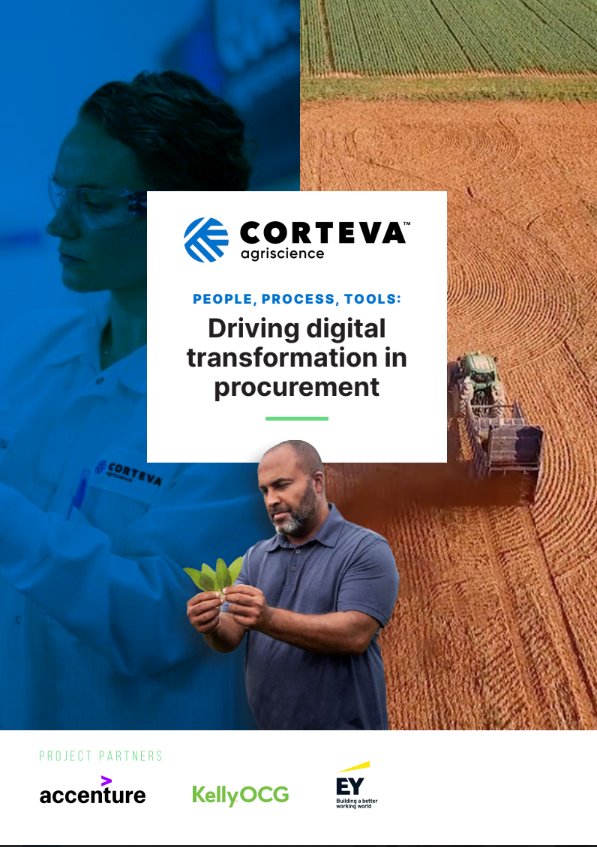Procurement is undergoing nothing short of a revolution right now, as a traditionally transactional function evolves into a truly strategic resource that provides leadership and business owners with insights and guidance, gleaned from its holistic purview of the work being performed across all areas of the enterprise. A prime representation of this can be found at LendingTree, America’s largest online lending marketplace. LendingTree has grown tremendously over the past several years and needs a procurement team that is able to flex and support increasing demand resulting from the expansion of its operations.
When Michael Leiken started at the company in 2016, as Director of Procurement (since re-branded as Spend Management), there was literally no procurement function. Nearly four years on, under Leiken’s guidance, the company has benefited from an intentional and systematic overhaul that has seen the Spend Management team become a trusted business partner, delivering significant value to its customers.

There was little to no comprehension of the procurement function at LendingTree when Leiken joined, seeing as it was a new endeavor and most employees lacked prior experience working with procurement or sourcing teams. Understandably, Procurement was initially thought to have a very narrow scope (to negotiate pricing), a transactional purpose (process contracts), and be optional. Transformation of any kind requires disruption, and it could be said that the decision to hire Leiken was the integral disruption leading the way for what has followed since. “I joined the company in April ’16, to design and build a procurement function from the ground-up,” he explains from his North Carolina office. “I was brought in by, and reported directly to, the CFO. This began as a one-person show.”
Leiken opened his eyes and ears and went straight to work—meeting with business owners to learn about their roles, the overall LendingTree business model, current tools used, the various processes followed and seeking to understand pain points. In a relatively short period of time, he was able to identify areas that could be tweaked and drafted an initial design for his new function.
Any significant change to a company’s operations and processes faces hurdles and number one on that list is change management. Successfully driving change requires collaboration with and support from all involved stakeholders affected by the change. Garnering buy-in from internal customers, who are now being asked to adapt to new ways of working, is always a tricky obstacle to overcome. LendingTree’s culture and core principles are embodied by an entrepreneurial spirit. Employees are encouraged and empowered to be ambitious and creative, challenge ideas, take charge, and make things happen. This further complicated the task at-hand. “It’s common for people to resist change and fear giving up control of things they’re accustomed to managing.” Leiken explains. “That’s why it’s essential to look at things from the perspective of others and accept the fact that human nature makes people want to know what’s in it for them. So, how was I going to get their support?”
Procurement’s greatest ally at LendingTree was the CFO, who involved the team (essentially Leiken) in every project that crossed his desk and appropriate email thread that reached his Inbox. The CFO’s support really drove the early engagement from the business. “In my different stops along the way, in different companies and industries, I’ve always developed great relationships. I’m proud to say that once somebody becomes a customer, even if they don’t want to be my buddy, they recognize and appreciate the work product and value I’m delivering to them and the company. It starts with one opportunity, and once you do something for them that far exceeds their expectations— either saving the day when they’re in a tough spot or helping them accomplish their goals and deliver a “win” for their team— that’s what truly converts them into being believers. From that point forward, they come back as a repeat customer and share their experience with others, becoming an ambassador of sorts for you and the team.”
It’s easy to take for granted the notion of having a blank slate. However, navigating a greenfield opportunity, such as the establishment of procurement at LendingTree, requires a vision and framework that fits the culture, supports achieving company goals and adds value to all involved. Yet, it must remain flexible and agile to account for the many bumps in the road. “You always have to be ready and willing to change, as long as it’s focused on accomplishing the specific objective(s) and is aligned with the big-picture goal, then it’s fine. Be realistic; it’s not easy and will not unfold how you originally planned, but you can’t let that get in your way. Although it can feel like trying to race uphill on rollerblades, making headway and seeing progress is exciting and provides further motivation to continue the effort.

“None of this is about ego, it’s about making things better. And when it comes to transformative efforts like this, I’m sure changing gears midstream is pretty common.”
Over the past few years, LendingTree has experienced significant growth. Nine acquisitions have seen the company grow from three offices in two cities and approximately 250 employees to 11 offices in seven cities and more than 1,100 employees. As companies grow, through further acquisitions and the scaling of operations, so does the need for a robust procurement strategy and high-performing team to execute upon that strategy.
According to Ryan Quinn, LendingTree’s SVP and Co-General Counsel, “Our team works closely with Spend Management, and shares many parallels. I joined the company in 2017 and can’t begin to imagine how things would function if their team and the procurement process weren’t already engrained in how we operate.”
Leiken was on his own for that first year at LendingTree. When he started, there weren’t any tools, processes, policies or real comprehension of what a procurement function meant. In addition to educating folks and promoting awareness of their “new” support resource, establishing credibility—both with leadership and customers—was an important early goal. “As I learned the business and researched historical data, I was able to identify key areas of spend. Although we have strong relationships with all credit bureaus, the relationship with TransUnion was not only critical, but shifting towards more strategic. It was an opportune time to recognize what would be most impactful for LendingTree and work with TransUnion to jointly develop longer-term goals.
“Building the right internal team was critical, but so was establishing a good rapport with corporate partners like TransUnion,” says Leiken. Indeed, LendingTree had – and continues to enjoy – a great relationship with TransUnion. “I was fortunate to have worked with them (TransUnion) early on in my role – it was huge. They have a nimble, knowledgeable team, much like ours. They worked closely with me and our Product team to evaluate ways to advance our business, and they’ve been terrific to work with from a day-to-day perspective. Having a like-minded partner in place helped me hit the ground running and build momentum.”
“I’ve worked with the Spend Management team on several successful deals and I partner with them closely to manage our strategic relationship with TransUnion,” said Charles Battle, LendingTree’s Senior Director of Product Management. “What I appreciate most about Michael and his team is the way they commit to fully understanding the business value of any given partnership before entering into negotiations. Also, while they always look for mutually beneficial outcomes, they aren’t afraid to stand their ground and push back during a tough negotiation. Put simply, our business is in a much better position with Spend Management on our side of the bargaining table.”
Leiken had a roadmap for the future of procurement at LendingTree, based upon his initial vision. First and foremost, Leiken knew the importance of understanding LendingTree’s spend profile. “Part of the vision was to develop strategies around categories of spend and to prioritize our time and efforts—in order to maximize our contribution. To do this, I needed to know the nature of these relationships, so I could start working backwards through the contracts and then engage the respective business owners and supplier contacts. I was walking blindly into all of this. It was 100% reactive. Spend analytics was one of my top priorities. We don’t have a formal ERP, so there weren’t any historical purchase requisitions and purchase orders that could be leveraged as part of the process. Fortunately, our Accounts Payable team was very helpful in providing data until we implemented a spend analytics solution”
LendingTree evaluated several products and ultimately partnered with Suplari for its spend analytics system. In order to have proper utility for Leiken’s team and then extend the value to business owners, the system had to be highly intuitive, easy to use and generate a positive overall user experience. “Despite having robust functionality, it was important to feel and seem light. Those factors, along with an exciting future product plan, contributed to our decision to partner with Suplari. I’m all about working with startups, and early stage companies, and testing new technology,” he enthuses. “Suplari’s system has a great look and feel, delivers artificial intelligence (AI)-powered insights and they’ve continued to expand their capabilities.”
In November 2018, with the procurement transformation well under way, the Spend Management team partnered with Scout RFP and rolled out its sourcing platform. This took the team from disparate systems and manual tasks into a streamlined tool. Scout serves as the intake funnel for all requests from the business. Requests are then reviewed and managed through an end-to-end process, involving review and approval from relevant stakeholders, through contract redlines. RFx events are issued via Scout and the team books its savings within each project. With all of this data now in one place, Leiken can leverage the reporting features to better understand the nature of what his team is managing, as well as easily sharing information with other internal stakeholders. “Scout has helped our team become much more efficient, enabling us to allocate more time to value-add activities.”
The Spend Management team also identified an opportunity and led the effort to better manage its travel spend. Although a travel policy exists, there hasn’t been much focus on ways to reduce costs, add visibility, and enhance the traveller’s experience from booking through reimbursement. Considering LendingTree’s growth and expanding footprint, its travel spend had also grown quite a bit. “We spent roughly $2 million in travel the prior year,” Leiken says, “and so we thought we should do something about it. We were just spending it, with zero rigor. So, we aligned with leadership, went through a formal process, and launched a new travel program using TripActions’ platform.”
The tools and platforms available to the Spend Management team at LendingTree were further bolstered by Zylo’s Software-as-a-Service (SaaS) Management Platform. Similar to spend analytics solutions, Zylo analyzes all of your spend data to identify SaaS applications you own. “The end game with Zylo is to manage your SaaS investments in an optimal manner,” Leiken explains. “It’s pretty amazing. It gives you the full visibility into your SaaS spend, associated contracts, license counts, utilization, etc. I’m excited to work with the Zylo team to complete our initial analysis and identify ways to save money. Plus, we’ll use this moving forward to further assist our customers when somebody wants something. We can say, let’s start with what we have right now.”
As procurement at LendingTree continues to evolve and new objectives are defined, addressing tail spend is on the list for 2020. Tail spend accounts for a relatively small percentage of a company’s overall spend, but can account for a disproportionately large percentage of its total transactional volume. “I think Fairmarkit’s product is pretty cool. Of course, it’s focused on tail spend; everybody has tail spend, and many don’t really pay a lot of attention to it, which is a shame. Fairmarkit leverages the community concept, and the notion of getting to bids faster, because it’ll automatically populate suppliers and already hosts the provider’s information. You can check a box if you want them to receive the bid. One of the things I’m pretty big on is extending the value and letting our business try to maintain ownership and do more on their own. We’re working through how a product of this nature will impact existing processes. Hopefully we’ll be able to figure things out and be in a position to go-live in Q3 or Q4 of this year.
“You always have to work to stay relevant. This aspect of the job is never done. It’s nice to be able to recognize that things are good today, but you always have to review and refresh and push to improve. These changes can sound like a scary, monumental shift, but it doesn’t mean that you have to be complicated in achieving it. When it comes to transformation, the simpler you can make it, the better.
“It’s pretty interesting to look back at where things started and where we are today. In 2016, I was a solo act and was able to complete 60 or so projects from April through to December. In July 2017, I made my first hire and we completed around 130 projects. Six months later, another team member joined and the team completed more than 400 projects in 2018! Clearly, the introduction of technology to manage our work was necessary. And this past year, we managed 555 requests via Scout. In total, the Spend Management team has booked more than $18M in savings. Each of us always has 25-plus projects we’re managing. But I promise you we’re going to ensure we have high quality contracts. We’re not going to rubber stamp something and roll over for the supplier or just process paperwork. We’re here to drive and maximize value from LendingTree’s investments with suppliers, which is not just about pricing. Although I enjoy negotiating and pride myself on my expertise, much more goes into doing a (quality) deal. I am very passionate about, and love, what I do. Somehow, I got lucky; it’s what I’ve done my entire career. One of the most important things I learned early on is it has to be all about your customer. You have to focus on how you make them successful, because it’s a win if they’re successful.”









